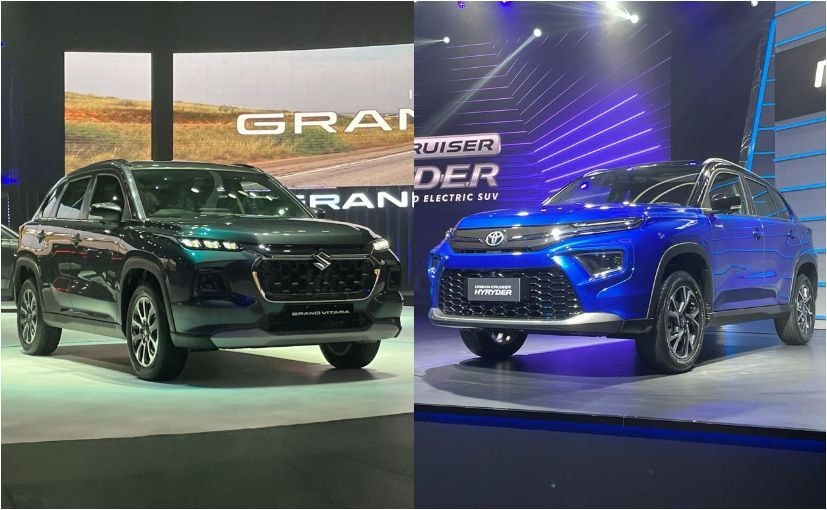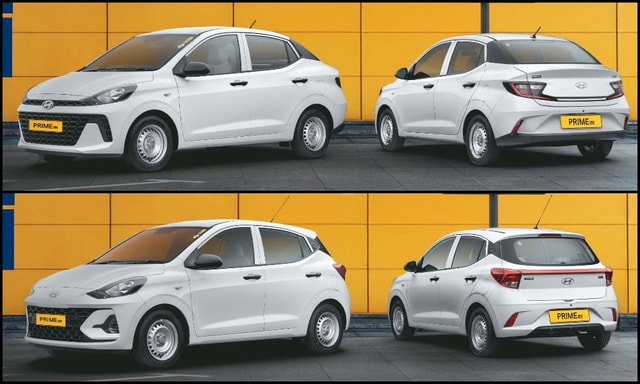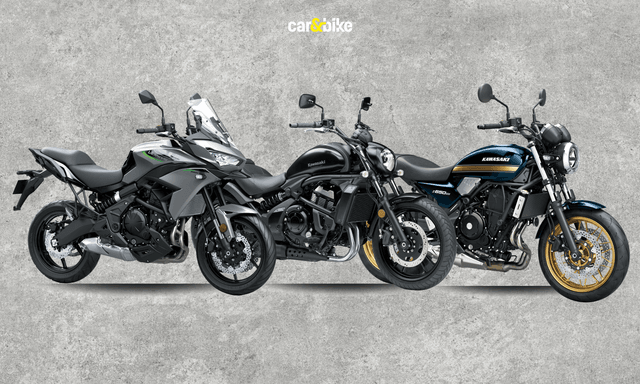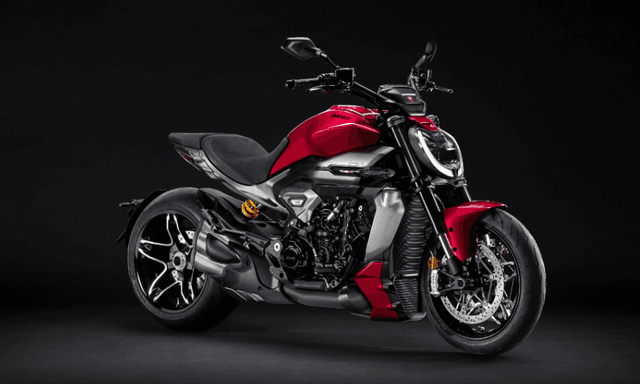Maruti Grand Vitara vs Toyota Urban Cruiser Hyryder: What Is Different

Toyota and Maruti Suzuki are set to both launch their third shared model in India later this year. The vehicle, a compact SUV, is the first under this partnership to be manufactured by Toyota and will take on the likes of the Hyundai Creta, Kia Seltos, Skoda Kushaq and VW Taigun. Toyota this time round was the first to reveal the new SUV christening it the Urban Cruiser Hyryder, followed by Maruti Suzuki who revived the Grand Vitara name for its SUV. We take a look at how the two models differ.
Exterior Design
Starting with the design, being sister models both SUVs share quite a few similarities. Viewed from the sides there is little to set the two SUVs apart. Both share identical shoulder lines and window line with even the floating pillar execution at the D-pillar the same. The key difference though comes down to the wheels with both the Toyota and Maruti using different designs.
From the sides the Hyryder (top) and Grand Vitara are near identical in terms of looks.
It’s at the front where the differences between the two are most noticeable. While both still use the same basic split headlamp design, the Toyota’s design is line with its global models with a sleek partially covered grille flanked by dual-stock LED daytime running lamps, angular headlamp recesses on the bumper and a prominent central air-vent.
The difference in design is apparent up front with the Hyryder looking a lot more sleeker than the Grand Vitara
Maruti meanwhile has gone with a simpler singular LED DRL layout featuring the dot-style elements we first saw on the second-gen Baleno. The prominent grille adds some muscle to the design while the headlamp housings are squarer than on the Toyota. The Maruti too gets a central air vent lower down on the bumper but not as prominent as the unit on the Toyota.
The most noticeable difference at the rear is he tail-lamp design. Both SUVs get a secondary light cluster lower on the bumper.
Coming to the rear, it’s the tail-lamp that is the most noticeable change here. The Toyota uses sleek units with C-shaped LED elements while the Grand Vitara features a set of three stacked LED elements with a lightbar stretching towards the Suzuki badge on the tailgate. The housing also features a darkened finish compared to the body coloured panel on the Hyryder. Look closer and you will notice that the faux rear skid plate gets a slightly tweaked design.
Interior Design
Move to the cabin and you might find yourself hard pressed to tell the two models apart. The devil is in the detail and that holds very much true when you see the picture of the two cabins side by side. Aside from the badging you’ll be hard pressed to tell the difference in design until the upholstery comes into question.
Both cabins get an identical design and layout and same features. Note that the Grand Vitara pictured is the non-hybrid model. The hybrid gets digital dials and heads-up display
Compare the strong hybrid models together and you will notice that the Silver trim on the Hyryder’s dashboard is replaced by champaign gold ones on the Grand Vitara. Additionally, while the Hyryder Hybrid gets a dual tone black and brown upholstery, the Grand Vitara gets an all-black cabin. Moving to the mild hybrid petrol variants, both get silver trim inserts on the dashboard with the Toyota getting an all-black cabin and the Maruti a dual-tone black and brown finish.
Equipment
Coming to the equipment, a brief browse of their respective brochures reveals that the break-up of equipment is more of less identical. The standard petrol is available in a choice of four variants with the Hyryder one-upping the Maruti when it comes to the Hybrid. The Grand Vitara Hybrid is limited to just two top variants – Zeta+ and Alpha+ - while the Hyryder is available in three – S, G and V (top trim). Both SUVs additionally get their own brand’s connected vehicle technology.
Top-spec hybrids get the same bells and whistles. Grand Vitara Hybrid gets all black interior with Champaign inserts to Hyryder's dual tone upholstery and silver inserts.
Additionally, Maruti is using the ‘+’ as a variant differentiator between the standard and hybrid with the latter models packing in more kit than its standard counter part in both the Hyryder and Grand Vitara. Compare the equipment list and you will also notice that tech such as ventilated seats, digital instrument cluster, head-up display and wireless phone charging are reserved for the Hybrid variants.
Engines
Coming to the engines, both SUVs share the same underpinnings and engine line-up. Both use Maruti’s 1.5-litre K15 DualJet mild-hybrid engine in the standard petrol model and Toyota’s 1.5-litre TNGA petrol engine paired with an electric motor on the hybrid. Interestingly when comparing the standard petrols, it's the Grand Vitara that is marginally more powerful - 102 bhp and 137 Nm as against the Hyryder's 101 bhp and 135 Nm.
The Hybrid engine option meanwhile develops the same amount of power in both variants with a combined output of 114 bhp. The 1.5-litre petrol unit develops 91 bhp and 122 Nm of torque with the electric motor rated at 79 bhp and 141 Nm.
In terms of gearboxes, the 1.5 K-Series petrol is available with either a 5-speed manual or 6-speed automatic while the Hybrid gets an eCVT as standard.
Latest News
 Carandbike Team | Dec 30, 2025Hyundai Aura, Nios-Based Prime SD & Prime HB Taxis Launched In IndiaCarmaker rebrands fleet models under the Hyundai Prime brand rather than as separate variants of its passenger car range, as it previously did with the Xcent1 min read
Carandbike Team | Dec 30, 2025Hyundai Aura, Nios-Based Prime SD & Prime HB Taxis Launched In IndiaCarmaker rebrands fleet models under the Hyundai Prime brand rather than as separate variants of its passenger car range, as it previously did with the Xcent1 min read car&bike Team | Dec 30, 2025VinFast's V-Green Partners With Hindustan Petroleum To Setup EV Charging StationsV-Green is owned by Pham Nhat Vuong, Chairman of Vingroup Corporation and founder of VinFast.1 min read
car&bike Team | Dec 30, 2025VinFast's V-Green Partners With Hindustan Petroleum To Setup EV Charging StationsV-Green is owned by Pham Nhat Vuong, Chairman of Vingroup Corporation and founder of VinFast.1 min read Jafar Rizvi | Dec 30, 20252026 Kawasaki Versys 650, Vulcan S, Z650RS Launched: Now E20 CompatibleKawasaki has updated its 650cc range of motorcycles with E20 fuel compatibility and is offering new paint schemes.1 min read
Jafar Rizvi | Dec 30, 20252026 Kawasaki Versys 650, Vulcan S, Z650RS Launched: Now E20 CompatibleKawasaki has updated its 650cc range of motorcycles with E20 fuel compatibility and is offering new paint schemes.1 min read car&bike Team | Dec 29, 2025JSW MG Motor India Extends Assured Buyback Plan To 5 YearsMG has expanded its EV buyback programme, which is also offered for commercial MG ZS EV owners.1 min read
car&bike Team | Dec 29, 2025JSW MG Motor India Extends Assured Buyback Plan To 5 YearsMG has expanded its EV buyback programme, which is also offered for commercial MG ZS EV owners.1 min read car&bike Team | Dec 29, 2025Ducati XDiavel V4 Launched In India At Rs 30.89 LakhThe XDiavel V4 sits as a cruiser in the Diavel range and will be sold alongside the standard model.2 mins read
car&bike Team | Dec 29, 2025Ducati XDiavel V4 Launched In India At Rs 30.89 LakhThe XDiavel V4 sits as a cruiser in the Diavel range and will be sold alongside the standard model.2 mins read car&bike Team | Dec 28, 2025Nissan Gravite MPV Spied Testing Yet Again Ahead Of Jan 2026 DebutNissan’s subcompact MPV will share its underpinnings with the Renault Triber.1 min read
car&bike Team | Dec 28, 2025Nissan Gravite MPV Spied Testing Yet Again Ahead Of Jan 2026 DebutNissan’s subcompact MPV will share its underpinnings with the Renault Triber.1 min read
 Preetam Bora | Dec 30, 2025TVS Orbiter Review: Real-World Performance and Range TestedThe TVS Orbiter is a promising electric scooter promising decent range, practicality and pricing. But is there any reason to avoid it? We spent a few days getting to know it better.9 mins read
Preetam Bora | Dec 30, 2025TVS Orbiter Review: Real-World Performance and Range TestedThe TVS Orbiter is a promising electric scooter promising decent range, practicality and pricing. But is there any reason to avoid it? We spent a few days getting to know it better.9 mins read Jafar Rizvi | Dec 24, 2025MG Windsor EV 38 kWh Long-Term Report: IntroductionThe Windsor EV has joined our garage, and before it settles into daily duty, I took it out to get a sense of what living with an electric car is like.4 mins read
Jafar Rizvi | Dec 24, 2025MG Windsor EV 38 kWh Long-Term Report: IntroductionThe Windsor EV has joined our garage, and before it settles into daily duty, I took it out to get a sense of what living with an electric car is like.4 mins read Seshan Vijayraghvan | Dec 23, 20252026 Kia Seltos Review: Formula Is Spot On, But Is The Timing Right?The 2nd-gen Kia Seltos has arrived, but it has the challenge of facing strong rivals like the Victoris and Sierra. The question is simple - Does it still have what it takes?9 mins read
Seshan Vijayraghvan | Dec 23, 20252026 Kia Seltos Review: Formula Is Spot On, But Is The Timing Right?The 2nd-gen Kia Seltos has arrived, but it has the challenge of facing strong rivals like the Victoris and Sierra. The question is simple - Does it still have what it takes?9 mins read car&bike Team | Dec 26, 2025Tata Punch EV Long-Term Second Report: Highway Performance, Pros & ConsAfter a week of living with the Tata Punch EV Long Range—including a proper Mumbai-Nashik highway test—we've learned what this little electric SUV is really made of.1 min read
car&bike Team | Dec 26, 2025Tata Punch EV Long-Term Second Report: Highway Performance, Pros & ConsAfter a week of living with the Tata Punch EV Long Range—including a proper Mumbai-Nashik highway test—we've learned what this little electric SUV is really made of.1 min read Seshan Vijayraghvan | Dec 22, 20252026 Tata Harrier & Safari 1.5 Hyperion Review: By The Power Of Petrol!The new Tata Harrier and Safari petrol packs a new 1.5-litre TGDI Hyperion engine, but is it an ideal alternative to the diesel version?7 mins read
Seshan Vijayraghvan | Dec 22, 20252026 Tata Harrier & Safari 1.5 Hyperion Review: By The Power Of Petrol!The new Tata Harrier and Safari petrol packs a new 1.5-litre TGDI Hyperion engine, but is it an ideal alternative to the diesel version?7 mins read
























































































































